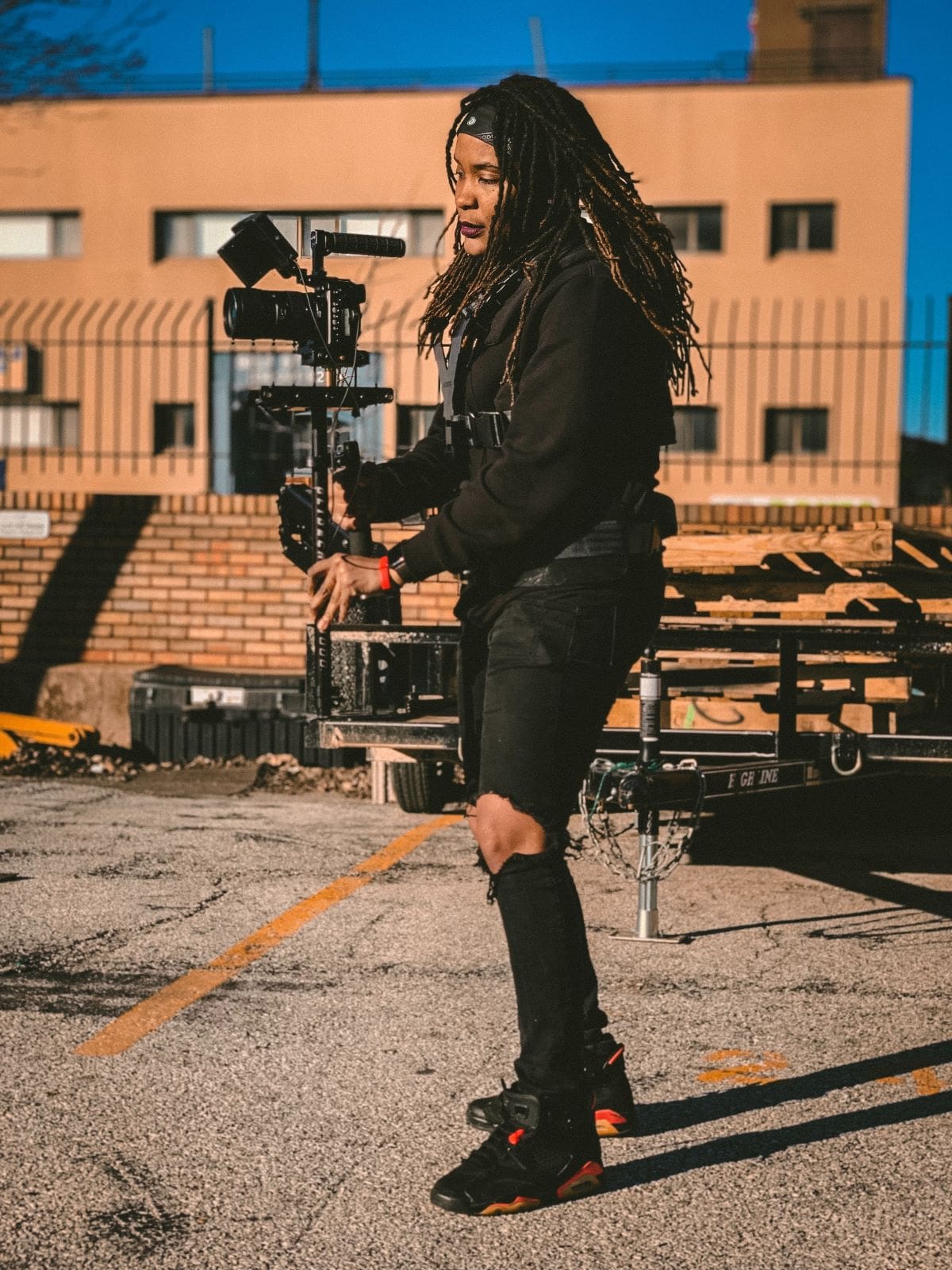4:3 Aspect Ratio - How It's Used in Filmmaking
Rent film gear from local filmmakers.

Rent film gear from local filmmakers.
Back in the olden days, 4:3 ratios dominated early cinema and television screens.
These days we have adjusted to a whole host of different ratios like 16:9, leaving 4:3 in the dust.
Read on to discover what 4:3 ratios are and why they are cropping up again on our screens.
What is the 4:3 aspect ratio?
4:3 aspect ratio features
- A screen or image that is 4 units wide by 3 units tall.
- Usually pronounced as ‘Four-Three’, ‘Four to Three’ or ‘Four by Three’.
- It was the default aspect ratio used with 35mm celluloid film.
- It was the first aspect ratio used for our television screens and computers, hence its other name: “fullscreen ''.
- Square and box-like appearance.
- Also known as 1.33:1.

What are the 4:3 resolutions?
Here are some common 4:3 aspect ratio resolutions:
- 640×480
- 800×600
- 960×720
- 1024×768
- 1280×960
- 1400×1050
- 1440×1080
- 1600×1200
- 1856×1392
- 1920×1440
- 2048×1536
Some uncommon resolutions are:
- 40x30, 160x120
- 256x192
- 320x240
- 384x288
- 400x300
- 512x384
- 832x624
- 1152x864
- 1400x1050
- 1792x1344
- 1856x1392
- 2304x1728
- 2560x1920
- 2800x2100
- 3200x2400
- 4096x3072
- 2704x2028
- 2720x2040
- 2732x2048
- 4000x3000
- 6400x4800

A history rundown of 4:3 in cinema
At the beginning of cinema and TV, 1.33:1 was the standard aspect ratio. This was because it was offered with technology at the time.
This ran from the earliest days in the 1890s until the 1920s, although not everyone abided by it. Some films had ratios ranging from 1.19:1 to 1.33:1.
These fluctuations demanded a standardized ratio. In 1932 the Academy of Motion Picture Arts created the 1.37:1 aspect ratio. This was slightly wider than 1.33:1 to accommodate a soundtrack on the film reel. This was the norm for almost two decades.
1.33 soon evolved into the 4x3 ratio, which dominated the 1940s and 50s. Since pretty much every movie made could fit into the 4x3 ratio, TV became the hot new thing to watch media on.
Movie theaters reacted to this by creating a widescreen revolution. Most movies from the 1950s to today are in this wider ratio. It wasn’t until the 1990s that TVs also adopted wider screens.
Today, 16:9 is the new norm, and 4:3 has generally been left in the last century.

How filmmakers use 4:3 today
Over the years, the line between 1.33:1 and 1.37:1 has been increasingly blurred. But with Blu-ray, DVD, and using websites like IMDB, we can finally see the accurate ratios of films. Since these ratios are so similar, 4:3 has become a catch-all term for them both.
Since the widescreen revolution in the 1950s, many films have been shot in 1.33 and cropped later to 1.66 or 1.85.
In the last decade or so 4:3 ratios have been cropping up quite frequently- especially in indie films. It shows up a lot in smaller movies, like Jonah Hill’s Mid90s (2018). More obscure ratios like 1.19:1 have also cropped up, like in Robert Egger's The Lighthouse.
It was also used in the new Marvel TV show Wandavision since the show paid homage to motifs of TV in the 50s, 60s, and 70s. It was a way to show Wanda’s created world compared to the world outside (which is in 2.39:1).
Although 4:3 is mostly a thing of the past, it still finds its way back into contemporary media both in indie films and the mainstream.
3 film examples of 4:3 aspect ratios
1. Justice League (Zack Snyder)
Justice League was shot in 4:3 as a creative choice by the director. It premiered on HBO and stayed in 4:3 to preserve Synder’s vision.
2. The Grand Budapest Hotel (Wes Anderson)
This box office hit notably used many different aspect ratios- but mainly stuck to 1.37 (very much in Anderson’s style).
3. The Mountain (Rick Alverson)
Rick Alverson shot in 1.37:1 here to help block his actors.

Learn more. Dive into the filmmaking process
Now that you have learned all about aspect ratios, it’s time to deep dive into the filmmaking process.
Check out our page on filmmaking to get started.
What is the 4:3 aspect ratio?
4:3 is a screen or image that is 4 units wide by 3 units tall. It was the most common aspect ratio in the heyday of film and cinema.
Is 4:3 a landscape ratio?
4:3 is a classic TV landscape ratio.
What size is 4:3 resolution?
There are many common 4:3 resolutions, such as 640x480 or800x600.






















